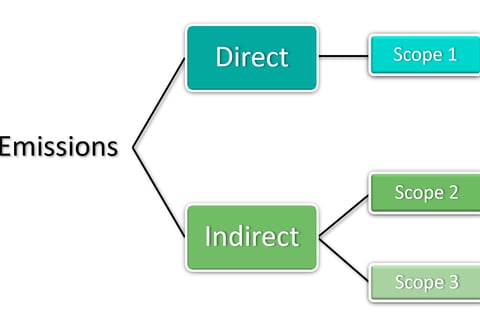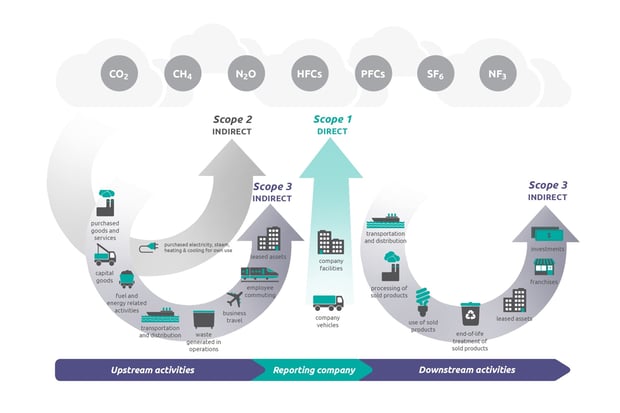What are Scope 1, 2, 3 Emissions According to the GHG Protocol?
You may have come across the terms "GHG Protocol" and "Scope 1, 2, 3 emissions" without knowing what they mean. In this article, SPARKD Partners will present a brief overview of what these are and how they can be applied to your supply chain.
Scope 1 Emissions
Scope 1 covers emissions from sources that an organisation owns or controls directly.
•Examples:
–Generation of electricity, heat, or steam
–Physical or chemical processing
–Transportation of materials, products, waste, and employees
–Fugitive emissions
•Inclusion in GHG inventory: required
Scope 2 Emissions
Scope 2 are emissions that a company causes indirectly as a result of purchased electricity, steam, heating and cooling. For office-based businesses, Scope 2 is usually the most significant and can be reduced with relative ease through energy efficiency and conservation practices.
•Examples:
–Generation of electricity for heating/cooling an office
•Inclusion in GHG inventory: required
Scope 3 Emissions
Scope 3 encompasses all other indirect emissions that are not produced by the company itself and are not the result of activities from assets owned or controlled by them.
•Examples:
–Transport in vehicles not owned/controlled by the company
–Energy consumed during customer use of company products
–Manufacturing activities from suppliers of company products
•Inclusion in GHG inventory: optional under Corporate Standard, but required by GHG Protocol Scope 3 Standard


The GHG (Greenhouse Gas) Protocol is an international standard that establishes comprehensive global standardized frameworks to measure and manage greenhouse gas emissions from private and public sector operations, value chains and mitigation actions. It was established when World Resource Institute (WRI) and World Business Council For Sustainable Development (WBCSD) recognized the need for an international standard for corporate GHG accounting and reporting in the late 1990s, and it currently supplies the world's most widely used greenhouse gas accounting standards.
In this article, we will briefly introduce what Scope 1, 2, and 3 emissions are. For the full calculation standards, read the full GHG Protocol Corporate Accounting and Reporting Standard.
Before we can understand how Scope 1, 2, and 3 emissions are classified, we first have to understand organizational boundaries. These boundaries are split into Organizational Boundaries, and Operational Boundaries, and refer to imaginary lines that encompass the emissions to include in a company’s GHG inventory. Organizational Boundaries determine which company operations to include, while Operational Boundaries determine which emissions sources to include, and how to categorize those emissions.
The reason we start off with defining these boundaries is to determine which sources or emissions to include, and classify sources accordingly to avoid double-counting. Having these boundaries also provides more useful information for stakeholders to make decisions, and helps manage GHG risks and opportunities along the value chain with more clarity. There are 2 broad categories for emission type – Direct and Indirect. Direct Emissions refer to emissions as a result of energy sources owned or controlled by the reporting company, while Indirect Emissions are a consequence of the activities of the reporting company but occur at sources owned or controlled by another company. Scope 1 emissions fall into the Direct Emissions category, whereas Scope 2 and Scope 3 emissions are Indirect Emissions.




Developing a full GHG emissions inventory that comprises of Scope 1, Scope 2 and Scope 3 emissions enables companies to understand their full value chain emissions and focus their efforts on the greatest reduction opportunities. It is highly recommended to define your scopes so as to avoid double counting when embarking on your sustainability journey.
To understand how to engage with your suppliers for Scope 3 emissions calculation, read the previous article - A Guide To Developing Scope 3 Supplier Engagement Targets.
For the full calculation standards, read the full GHG Protocol Corporate Accounting and Reporting Standard.


